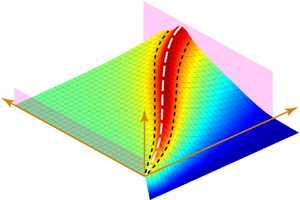Article contents
Thermal effect in shock-induced gas filtration through porous media
Published online by Cambridge University Press: 22 November 2024
Abstract

The gas dynamics of shock-induced gas filtration through densely packed granular columns with vastly varying shock intensity and the structural parameters are numerically investigated using a coupled Eulerian–Lagrangian approach. The results shed fundamental light on the thermal effects of the shock-induced gas filtration manifested by a distinctive self-heating hot gas layer traversing the medium. The characteristics of the thermal effects in terms of the thermal intensity and uniformity are found to vary with the shock Mach number, Ms, and the filtration coefficient of the granular media, Π. As the incident shock transitions from weak to strong, and (or) the filtration coefficient increases from O(10−5) to O(104), the heating mechanisms transition between three distinct heating modes. A phase diagram of heating modes is established on the parameter space (Ms, Π), which enables us to predict the characteristics of the thermal effect in different shock-induced gas filtrations. The thermal effects markedly accelerate the pressure diffusion due to the additional heat influx when the time scale of the former is smaller than or comparable to the latter. Based on the contour map displaying the coupling degree of the thermal effects and the pressure diffusion, we identify a decoupling criterion whereby the isothermal assumption holds if only the pressure diffusion is concerned. The thermal effects may well bring about considerable thermal shocks which pose a great threat to the integrity of the solid skeleton and further reduce the overall shock resistance performance of the porous media.
Information
- Type
- JFM Papers
- Information
- Copyright
- © The Author(s), 2024. Published by Cambridge University Press
References
- 1
- Cited by


